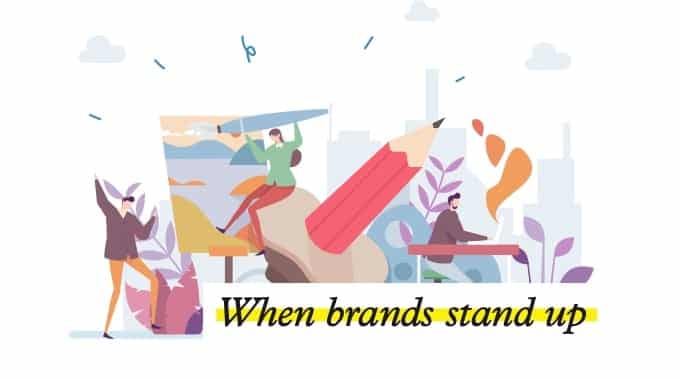I have this notion that design can change the world
In the midst of recent protests, pride marches, plastic-free campaigns, political division and the Covid pandemic, more brands are taking a stand on the issues facing our world today. And it’s not just brands recognizing their responsibility to show up and speak out; consumers want to hear how brands feel about the issues they care about.
There are hundreds of instances where brands have used their influence to affect change and more than half of consumers believe that brands have the power to solve social issues. In the past few months, we have seen a more concentrated focus on issues-related messaging, advertising, labels and packaging because we are in a state of crisis on so many different fronts. What’s new this time around? This time, it’s not going to stop. Consumers will continue to expect brands to take responsibility for improving the world.
When a brand stands up for an issue, how does that show up in its packaging? You may have seen the ways in which these brands have taken a stand: as part of #metoo, Brawny launched a ‘Strength has no Gender’ campaign. In March, in honor of Women’s History Month, KIND created the limited-edition Equality Bar to support the ERA. And in June, during Pride Month, Skittles gave up its signature rainbow to create limited-edition black, gray and white packages (and donated a portion of its proceeds to a leading advocacy group).
While many brands turn to packaging design to voice their stance, packaging itself is an environmental issue. Thousands of brands have dedicated innovative solutions and support to protect the planet and reduce waste. Allbirds, for example, was the first brand I saw that produced a carbon footprint label for its products. Like a food label that details calories, sugar and other health information, Allbirds tells customers how much CO2 was emitted during the construction of its shoes. (Unilever is following suit by including carbon footprint on its labels.) Allbirds is a shoe company that was founded on its commitment to renewable resources. The company makes its shoes out of wool, because wool is a renewable resource.
Creating a sustainable future is woven into the fabric of Allbirds’ corporate culture; so is its commitment to hold each team member accountable to achieving that goal. That’s a critical differentiator: brands can’t just pay lip service to a cause. They must be authentic and consistent when taking a stand. It must align with their purpose, or what Simon Sinek, one of my favorite modern-day philosophers and authors, calls their ‘why’.
Another example occurred at the start of the Covid pandemic. With the world’s hotels and restaurants closed, craft breweries had fewer customers to sell to. More than 600 breweries and distilleries quickly pivoted to manufacturing hand sanitizer. They saw the need and they felt strongly about a healthy world – and yes, that includes the health of their business and their employees. Many printers that were creating labels for wine, beer and liquor soon shifted to make labels for hand sanitizer.
It wasn’t just about revenue and keeping people employed – although those are valid goals in themselves. Many of those same breweries are donating a percentage of proceeds to local and national restaurant relief funds. They are putting their purpose into action and showing up as true community partners, giving to the very establishments that don’t have enough business to buy their products or employ staff.
Design to change the world
I have this notion that design can change the world. Perhaps it’s by using renewable resources for packaging materials or creating designed-to-fit boxes that eliminate waste. But in the coming days of (hopefully) economic recovery, I’m thinking bigger and broader. For example, say I add an embellishment or foil stamp to a packaging design. And say that embellishment helps increase sales for the brand, and that increase means more people can keep their jobs. That in turn means employees can survive this crisis better – mentally, physically and financially. Suddenly, that one embellished design could be changing the lives of entire families.
And that’s not all. When sales increase, production increases; the company stays afloat and it can purchase more from its suppliers. In turn, those suppliers might now be able to avoid lay-offs. And so it goes: the potential for purpose combined with action to create far-reaching change.
With today’s consumers increasingly more purpose- and issues-driven, there’s never been a more pivotal time for brands to be vocal and visual about taking a stand. Because if a brand isn’t taking responsibility for affecting change on the issues that are meaningful to them, their consumers, and their communities, consumers will switch to a brand that does.



